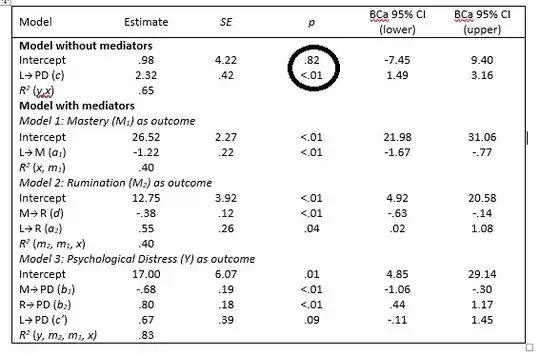Suppose I have some heavy-tailed data that I want to transform so it's roughly normal in order to perform a t-test.
Shapiro-Wilk normality test
data: NAPChange
W = 0.72716, p-value < 2.2e-16
Then, I use the LambertW R package to transform the data so that it is closer to a normal distribution (as per this post):
mod.Lh <- MLE_LambertW(x, distname = "normal", type = "h")
summary(mod.Lh)
Call: MLE_LambertW(y = NAPChange, distname = "normal", type = "h")
Estimation method: MLE
Input distribution: normal
Parameter estimates:
Estimate Std. Error t value Pr(>|t|)
mu 0.0057600 0.0028504 2.0208 0.0433 *
sigma 0.0383100 0.0031284 12.2459 < 2.2e-16 ***
delta 0.3429300 0.0677444 5.0621 4.146e-07 ***
---
Signif. codes: 0 ‘***’ 0.001 ‘**’ 0.01 ‘*’ 0.05 ‘.’ 0.1 ‘ ’ 1
--------------------------------------------------------------
Given these input parameter estimates the moments of the output random
variable are
(assuming Gaussian input):
mu_y = 0.01; sigma_y = 0.09; skewness = NA; kurtosis = Inf.
y <- get_input(mod.Lh)
test_norm(y)
$shapiro.wilk
Shapiro-Wilk normality test
data: data.test
W = 0.99463, p-value = 0.5504
Now that the data is roughly normal, I can finally perform a t-test.
HOWEVER, how can I interpret/quantify the results after such a transformation? Is there a way to revert the results to their original form (i.e. untransform results)?

